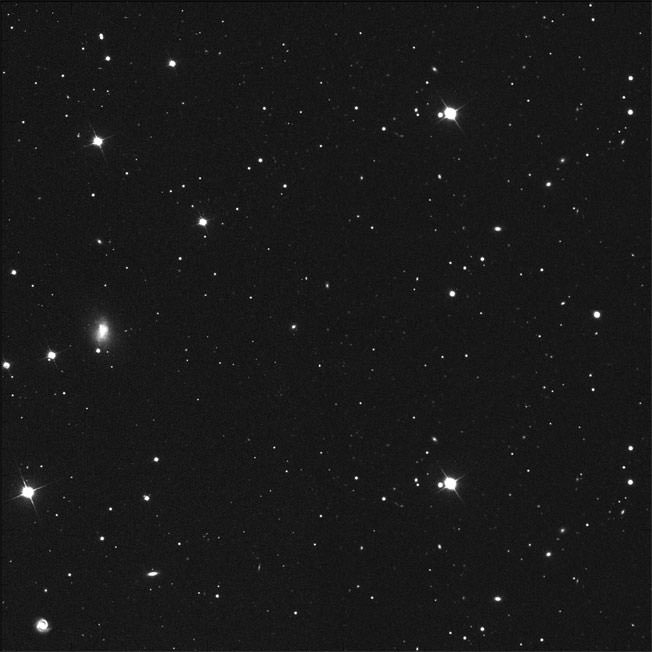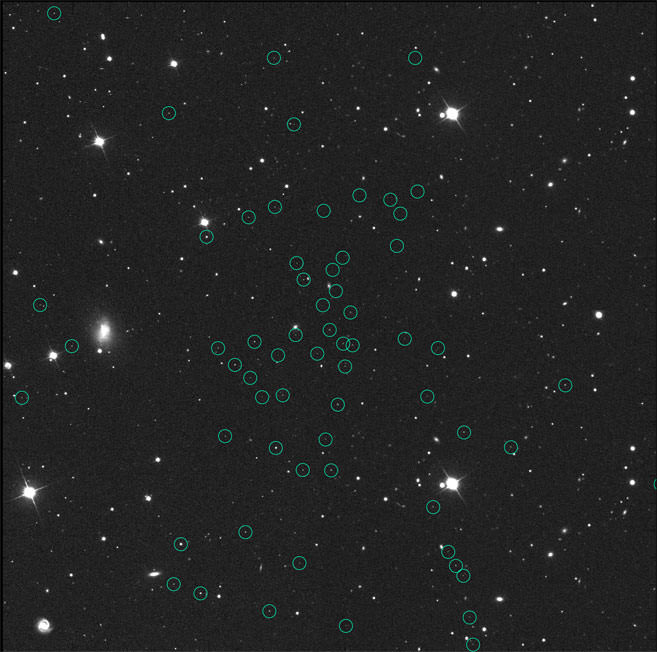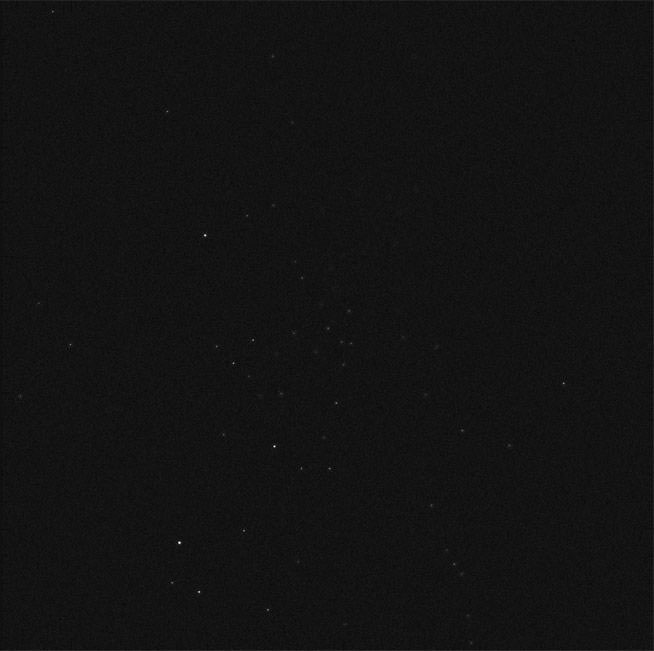Science News | 30 July 2010
A Complete Spectroscopic Survey of the Milky Way Satellite Segue 1: The Darkest Galaxy -- JD Simon et alNearby galaxy holds record for densest concentration of mysterious mass
When astronomers discovered the galaxy Segue 1 in 2007, they weren’t sure if it was anything more than a cluster of stars, perhaps stripped from the nearby Sagittarius dwarf galaxy. But observations with the Keck II telescope atop Hawaii’s Mauna Kea now confirm the status of Segue 1 as a galaxy by showing that its stars have a diverse chemical composition, Simon says.
Observations by the Anglo-Australian Telescope near Coonabarabran, Australia, have also found a diversity of stellar composition in Segue 1, a team including Rosemary Wyse of Johns Hopkins University in Baltimore, Md., report in an article scheduled to be posted at arXiv.org in early August.
After examining the stars’ compositions, Simon’s team calculated the total amount of mass in Segue 1 — both the unseen dark matter and the small number of faint, visible stars — by measuring how fast the stars move. The faster the stars orbit about the center of Segue 1, the heavier the galaxy.
The team found that although the stars in Segue 1 have a combined mass of no more than about 1,000 suns, the mass of the whole galaxy is about 500 times larger. “That tells us that Segue 1 is made almost entirely of dark matter,” Simon says.
Segue 1 is both dark matter–dominated and compact, yielding a dark matter density higher than any known galaxy. The galaxy’s high density and proximity to Earth — about 80,000 light-years distant — make it an ideal place to look for proposed signatures of dark matter.
- arXiv.org > astro-ph > arXiv:1007.4198 > 23 Jul 2010 (v1), 27 Jul 2010 (v2)
- arXiv.org > astro-ph > arXiv:1007.4199 > 23 Jul 2010 (v1), 27 Jul 2010 (v2)
Physical Review D 82 123503 (Dec 2010) DOI: 10.1103/PhysRevD.82.123503
Science Daily | Yale University | 19 Sept 2008
The Least Luminous Galaxy: Spectroscopy of the Milky Way Satellite Segue 1 -- M Geha et alA team led by a Yale University astronomer has discovered the least luminous, most dark matter-filled galaxy known to exist.
The galaxy, called Segue 1, is one of about two dozen small satellite galaxies orbiting our own Milky Way galaxy. The ultra-faint galaxy is a billion times less bright than the Milky Way, according to the team’s results, to be published in an upcoming issue of The Astrophysical Journal (ApJ). But despite its small number of visible stars, Segue 1 is nearly a thousand times more massive than it appears, meaning most of its mass must come from dark matter.
- arXiv.org > astro-ph > arXiv:0809.2781 > 16 Sep 2008
2009 ApJ 692 1464 doi: 10.1088/0004-637X/692/2/1464
Signals from the Faintest Milky Way Dwarfs -- LE Strigari et al
- arXiv.org > astro-ph > arXiv:0709.1510 > 11 Sep 2007 (v1), 29 Sep 2007 (v2)
2008 ApJ 678 614 doi: 10.1086/529488


